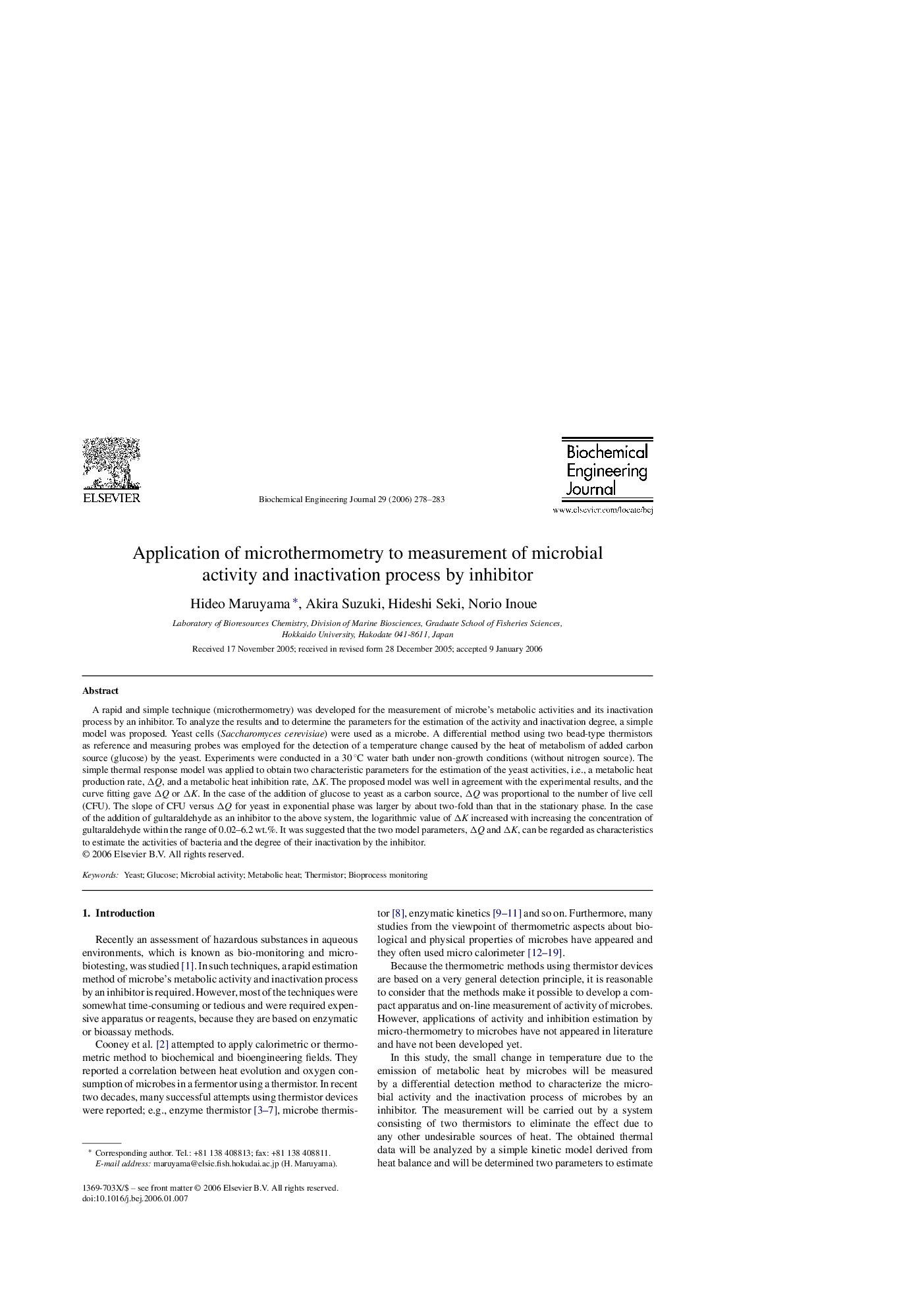| Article ID | Journal | Published Year | Pages | File Type |
|---|---|---|---|---|
| 5047 | Biochemical Engineering Journal | 2006 | 6 Pages |
A rapid and simple technique (microthermometry) was developed for the measurement of microbe's metabolic activities and its inactivation process by an inhibitor. To analyze the results and to determine the parameters for the estimation of the activity and inactivation degree, a simple model was proposed. Yeast cells (Saccharomyces cerevisiae) were used as a microbe. A differential method using two bead-type thermistors as reference and measuring probes was employed for the detection of a temperature change caused by the heat of metabolism of added carbon source (glucose) by the yeast. Experiments were conducted in a 30 °C water bath under non-growth conditions (without nitrogen source). The simple thermal response model was applied to obtain two characteristic parameters for the estimation of the yeast activities, i.e., a metabolic heat production rate, ΔQ, and a metabolic heat inhibition rate, ΔK. The proposed model was well in agreement with the experimental results, and the curve fitting gave ΔQ or ΔK. In the case of the addition of glucose to yeast as a carbon source, ΔQ was proportional to the number of live cell (CFU). The slope of CFU versus ΔQ for yeast in exponential phase was larger by about two-fold than that in the stationary phase. In the case of the addition of gultaraldehyde as an inhibitor to the above system, the logarithmic value of ΔK increased with increasing the concentration of gultaraldehyde within the range of 0.02–6.2 wt.%. It was suggested that the two model parameters, ΔQ and ΔK, can be regarded as characteristics to estimate the activities of bacteria and the degree of their inactivation by the inhibitor.
